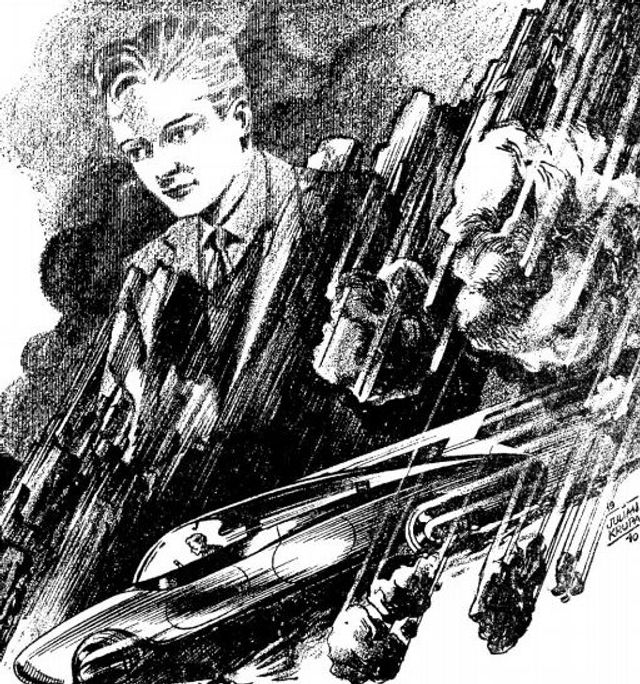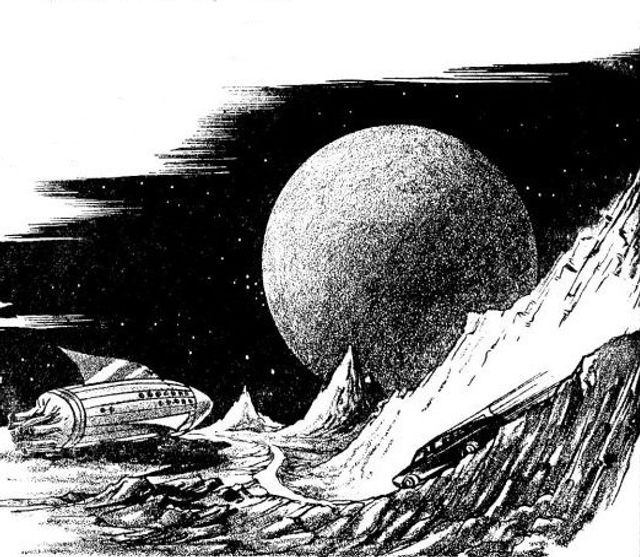-
Vijay Fafat
- Published on
Ross Rocklynne had a specific style in many of his stories. Set up a very non-standard astrophysical situation, and then solve it unconventionally. In “The Mathematical Kid”, he describes a young chap, a stowaway on a ship, “Aphrodite”, who warns the ship’s captain and anyone else who would listen that the ship was going to suffer a catastrophic collision in “eight days, seven hours, and forty three minutes”. No one believes him and the ship crashes on a previously undiscovered asteroid. The planet is about 3,000 miles in diameter but has 1.5 times earth’s gravity. The ship’s damaged thrusters can only handle about half that gravitational pull. So now how?
The kid offers a solution:
“So the thing to do,” he went on , impressively, “is to decrease the amount of gravity pulling on the ship!” And he gave me a “see how simple it is!” look.
How the kid actually achieves this is a funny read, for the planet is not a sphere but a gigantic mountain…
It turns out that the kid is none other than a “mathematical genius”, “Georgie Periwinkle, the mathematical prodigy, with six comets, two new planets—three, now—a new subatomic particle, and a mess of miscellaneous inventions to his credit!”. At the “Philadelpia Science Institution”, he had read the Aphrodite’s published orbit figures and had calculated that it would collide with his newly discovered planetoid. To help the ship, he had become a secret stowaway (We must overlook the bit that this mathematical genius had time to telegram “his friend, the President of USA” to inform him that he was running away but not ask the POTUS to stop the launch.).
Now, having successfully reduced the gravity acting on the ship, George Periwinkle, mathematical genius, calculates the new trajectory the ship would have to follow to reach Pluto…

